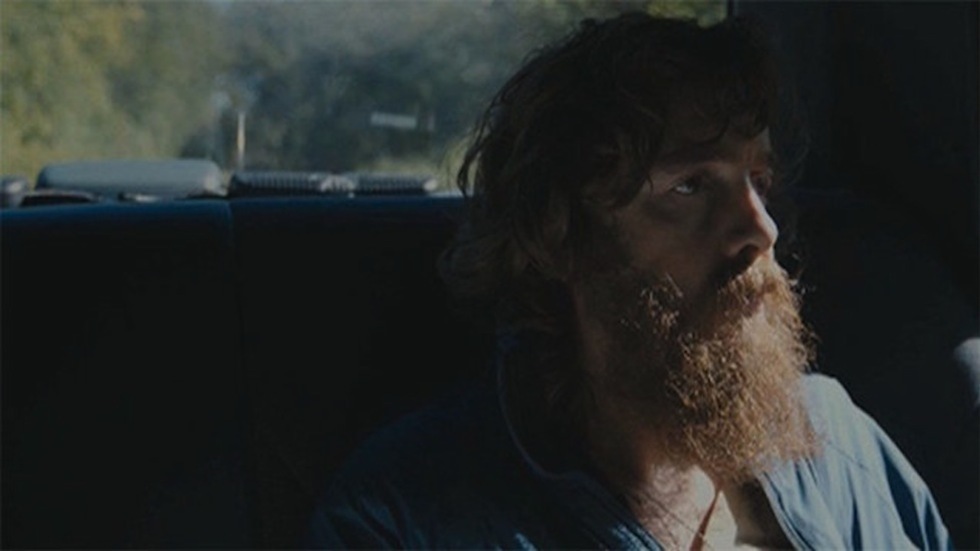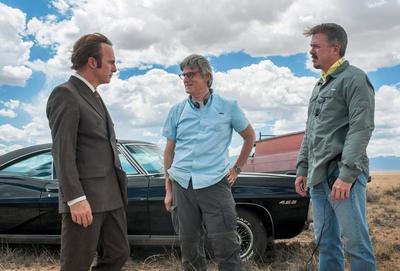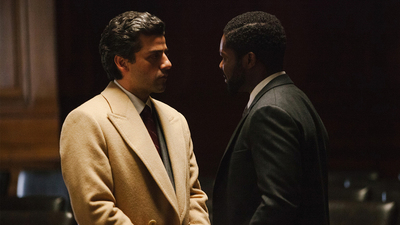
BY ZACHARY WIGON |
Under The Hood: The Obligatory Scene of 'Blue Ruin,' Reimagined
In the second installment of my exegesis on 'Blue Ruin's' narrative innovations, I look at how the film recasts its obligatory scene.

(SPOILER ALERT: If you have not seen Blue Ruin—and I highly, highly recommend you do—read no further! This Under The Hood entry is going to discuss one of the film's great surprises in detail.)
Every film has what some storytellers refer to as an "obligatory scene." It's the scene whose existence is necessitated by the premise. In Kill Bill, Beatrix MUST confront Bill by the end of the picture. In Sleepless In Seattle, Tom Hanks and Meg Ryan MUST meet and test their connection at some point in the story. And so on. Often, the strength of a film can be measured by how successfully it crafts its obligatory scene.
In addition to the narrative importance hung on the obligatory scene, there's another commonality this element of the narrative carries throughout all films: almost always, the obligatory scene serves as the climax of the movie. It comes around 90% of the way through the screenplay. This makes sense. The obligatory scene, almost by definition, is that which the narrative needs to build toward.
Few things are as infuriating as an obligatory scene that is unnecessarily prolonged till late in the picture - it's an obvious sign of disrespect for the audience's intelligence.
However, this can sometimes lead to contrived storytelling. We've all seen films that are obviously delaying their obligatory scene for the sake of dramatic contrivance, at the expense of realistic storytelling. How many mistaken-identity movies, for example, save the reveal of the character's true identity for the very end, even though it's often unlikely someone might take that long to reveal the truth? In fact, few things are as infuriating as an obligatory scene that is unnecessarily prolonged till late in the picture - it's an obvious sign of disrespect for the audience's intelligence.
Jeremy Saulnier's Blue Ruin, which I discussed last week, is one of the best examples of screenwriting I've seen in a low-budget indie in quite some time, and in addition to the manner in which it ingeniously employs obstacles (as discussed in the previous installment of this column), it also does something extremely unusual with its obligatory scene. It places that scene not at the end of the film, but at the end of the first act.
Since you saw the spoiler alert and read on, you know what I'm talking about: Dwight is seeking revenge against the man who murdered his parents some years earlier. In any other telling of this story, Dwight would only get the opportunity to finally take his revenge at the very end of the movie. Indeed, it's exactly such a film that the viewer is prepped to expect when watching Blue Ruin - a long, drawn-out tale of revenge. However, Dwight kills the man at the end of the first act, and the rest of the film becomes not about revenge, but about Dwight's survival and his increasingly strained attempts to extricate himself from the dangerous situation his emotions have thrust him into.
It's almost as if, by addressing and moving past that scene so early on, Saulnier enables himself to fit two films into one.
What is accomplished by Saulnier placing his obligatory scene so early in the story? For one, he earns the respect and trust of the audience; by not artificially arranging things so that this scene only comes - conveniently - at the end of the film, Saulnier indicates that he's interested in a realistic depiction of how such a scenario might really play out, not a contrived action spectacle. He also earns points for subverting the audience's expectations - and doing so in a manner that is not cheap (as so many narrative twists are), but rather, is closer to how real-life events might play out.
Additionally, by placing the obligatory scene so early in the film Saulnier is able to probe deeper into the story, giving him the opportunity to explore more thematic concerns than simply that of revenge - it's almost as if, by addressing and moving past that scene so early on, Saulnier enables himself to fit two films into one. Filmmakers interested in moving past the surface level of their narratives should take note

